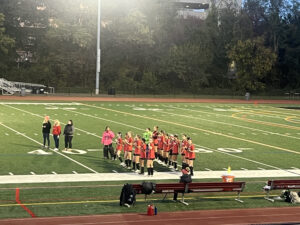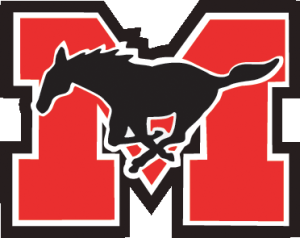 'Collector's Select'
'Collector's Select'
Through March 29 at Arlington Art Center (3550 Wilson Blvd., Arlington). Gallery Hours: Tuesday through Saturday 11 a.m. – 5 p.m. Call 703-248-6800, or see www.arlingtonartscenter.org for more information.
We have a decent size herd of art professionals around town, but they aren't the only ones in the loop. The current show at Arlington Arts Canter showcases the selections, and general aesthetic tastes, of seven local art collectors. In some instances these collectors are better known in the D.C. area art scene than the artists themselves, having become respected movers and shakers in their own right.
The largest and most focused of the lot is collector Daniel Levinas' wonderful solo exhibition of Argentinean artist Leon Ferrari's “Heliographs.” These seem to be pinkish red versions of blueprints. More than a simple color change, these are no ordinary blueprints. Here we find the architectural floor plans for buildings that have rooms filled with toilets, followed by more rooms of toilets. Another seems to be predominately dedicated to office and waiting room space. Hallway? Nope that's another meeting room. It's an obsessive architectural funhouse look at the world around us.
Another building has nothing but doorways. Another only stairs. Another only beds. These pieces seem a little too simple to keep us entertained for long. The most engaging pieces are the plans for buildings that seem normal, but upon close inspection could only be designed for those with intense disorders of the mind and/or body. The basic outlay and exterior seem OK, but somewhere in the design process the whole thing sort of veered off the road and ran into a ditch.
Speaking of driving, Ferrari also offers us plan views of traffic circles full of cars, and then people. Pedestrian flow patterns that go nowhere and everywhere. In each and every piece Ferrari has reduced people to ant-like status, just another bug on the blanket. It all comes off as a social commentary about how wacky and stupid societies can become, and how we're all still supposed to find a way of living, and coping with the stupidity and zaniness around us.
In the main entranceway collector Julian Fore shows a monochromatic blue abstract painting by Sam Gilliam that as much as anything resembles a large cloisonné broach. A nice abstract painting by Janis Goodman titled “Schoodic Point” — the tip of the Schoodic Peninsula in Maine's Acadia National Park. It's loose enough that you could take it for snakes or some such thing, if you wanted to, but it is also entertaining enough simply seen as water ripples and waves.
The most intense pieces in Fore's offerings are three color photos taken by William Christenberry titled “Bar-B-Q Inn.” Shot in 1981, 1989, and again in 1991 we see a lone building on some road named after Martin Luther King, that first falls into disuse, then disrepair, then seems well on its way to collapse. Time marches on, and quietly takes its toll on all of us one day at a time.
The Tiffany Gallery in the back of the building has suffered the onslaught of Philippa Hughes's collection of graffiti artists Tim Conlon, Bryan Conner, the Soviet and Rams. Subtitled as “Wreckfest @ Tiffany's,” one on-line art blogger waggishly quipped that it was Tiffany 1, Graffiti 0 … well … yeah, sort of …
As edgy and cool as this could have been, to cover the walls in nothing so much as your “tag” — your graffiti alias — seems like a great opportunity that somebody didn't know what to do with. Sort of like those folks who buy personalized license plates so they can tell us they are in fact driving a 1991 Buick. Well for better or worse, D.C. isn't a great graffiti town like Los Angeles.
The Chairman's gallery hosts Heather and Tony Podesta's selections. Photography by Steve Alterman, and Katheryn Cornelius hang on the walls while the abstract rope and marble sculpture of Barbara Liotta dominates the room.
Collector Philip Barlow's grouping is housed in the downstairs Experimental Gallery A. Here we find a diverse yet unified grouping. Wayne Edson Bryan has three paintings on birch plywood panels that seem abstract and microscopically biological at the same time. Tomas Rivas has two of his drywall carvings, that in this framed context seem to be cut-out paper sculptures, which, if you think about it, they are. I've seen Rivas' work several times and it always has an innovative, edgy feel to it. Then again, he's the only one I know who makes art by cutting up sheet rock. The works of Simon Gouverneur and Michele Kong round out Barlow's group.
Arguably the best work in the house is found in Experimental Gallery B. Here we find collector Henry L. Thaggert's solo focus on the video art of husband and wife team Bradley McCallum and Jacquline Tarry. McCallum and Tarry shoot footage of themselves in various scenarios. Generally speaking the interracial couple's work deals with gender and racial issues.
The cinematography here is nothing short of top drawer. Luscious deep colorations in one piece, bare and dark in another. Textural and natural in yet another. Composition and editing all seem to be up to “Hollywood quality.” All carefully crafted and executed, these are a million miles away from home movies.
All the films run on endless loops, with the plot and action seemingly without end, moments in time endlessly looping through our brains. “Cut” shows the couple cutting each other's hair … with a straight razor. The room is filled with the sound of hanks of hair slowly and crudely yielding to the semi-sharp blade. It's frankly a tad worrisome and gives you a sense of dread for what comes next, but it's just hair cutting. She weeps, and we wonder why. Is it a woman's attachment to her hair? Or is it an African American woman's attachment to her heritage? Why are they doing this? It all feels like a rite of passage, but a passage from where, to where? All for us to wonder.
“Topsy-Turvy” plays beneath a case housing three vintage Topsy Turvy dolls. Two dolls in one. The head and torso of a white doll sewn at the waist upside down onto the head and torso of a black doll, thereby allowing a child to have two dolls in one by simply flipping the skirt one way or the other. Perhaps it should be considered the original “Transformer” doll.
The footage in “Topsy-Turvy” shows the couple in a doorway spinning in mid-air, revealing one, then the other, as their garments repeatedly fall down while they rotate round and round.
“Exchange” shows the couple ostensibly giving each other a blood transfusion with each other's blood. It's pretty graphic stuff that also seems a rite of passage. Where “Cut” seems fairly psychotic and potentially dangerous, “Exchange” feels caring and pure. Where “Cut” takes something from each, “Exchange” literally takes and gives drop for drop. The couple in Cut seem engaged in a reductive process, removing the different to get at the same. The resulting interaction leaves each in a reduced state, whereas the couple in “Exchange” seem to be greater than the sum of their parts. Theirs is a union that sees them as the same inside, despite exterior differences. The couple in “Cut” seem to be trying to find commonality by literally cutting away what makes them different. Obviously you can only cut away so much, and as such, their process can only be semi-successful.
The most incisive piece in the whole building would have to be “Otis: Some Thoughts On Being A Separate Human Being.” Here we find a very pregnant and bare-bellied Tarry rubbing her belly in a loving, pregnant mother fashion, then suddenly and harshly scolding the child in the manor that it will experience several years down the road. From such a pure and loving place to such a harsh and withering reality. The jarring juxtaposition couldn't be more on target. It leaves you shaken and wondering what that child's future will be. Then you wonder, in our own ways, if we aren't all that child.












